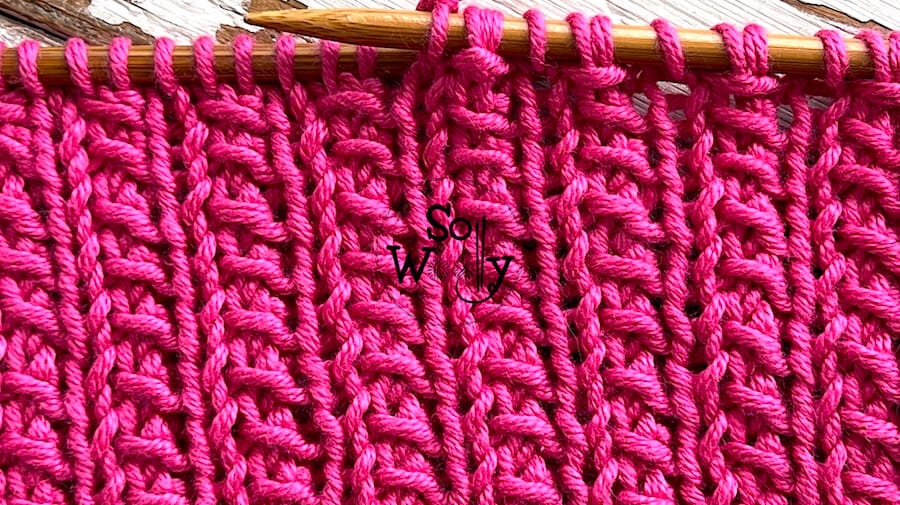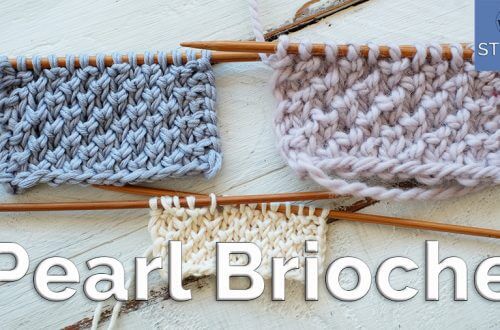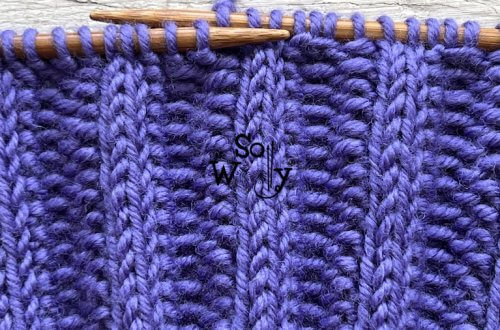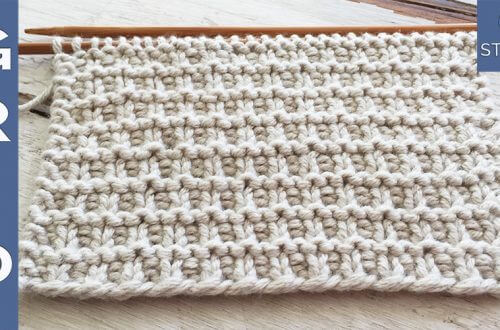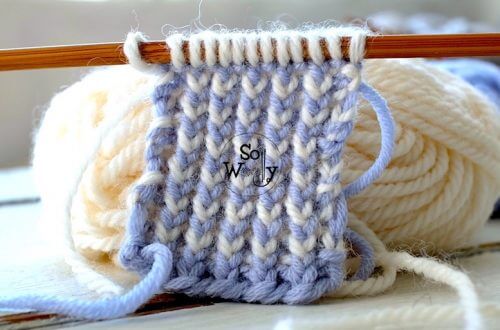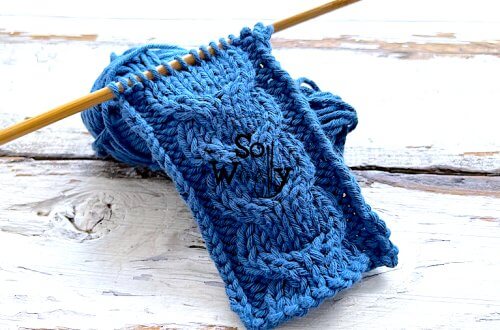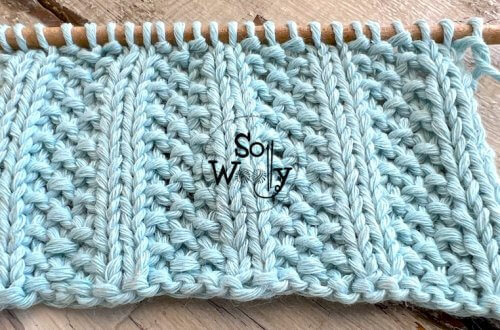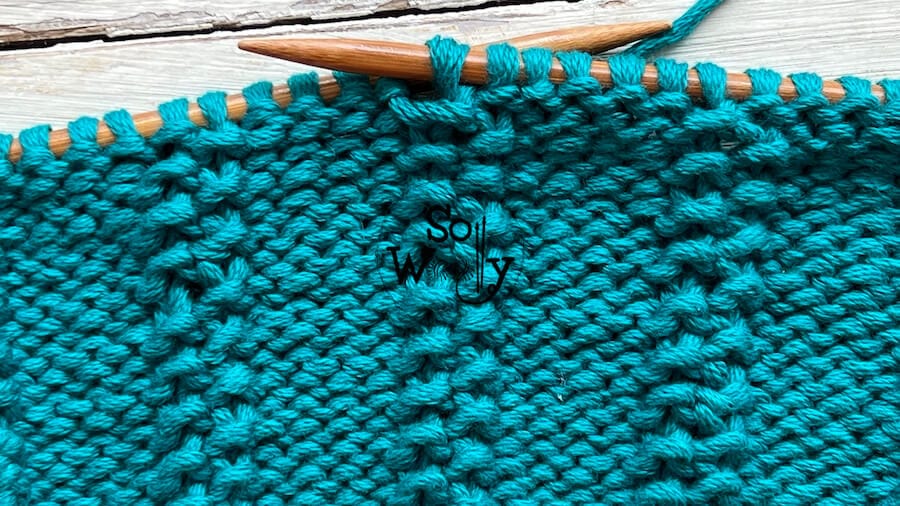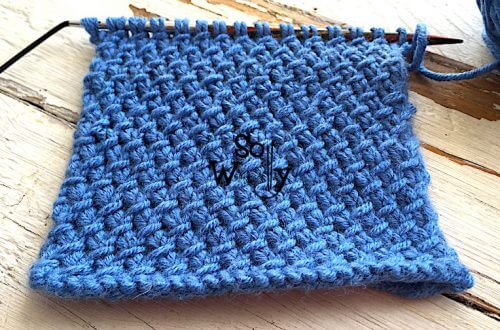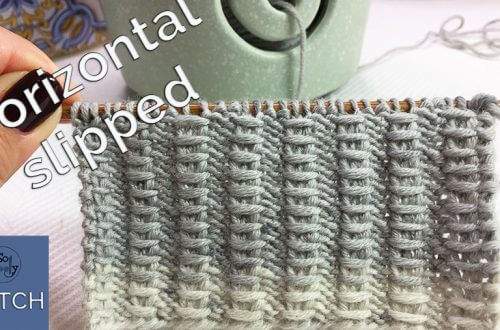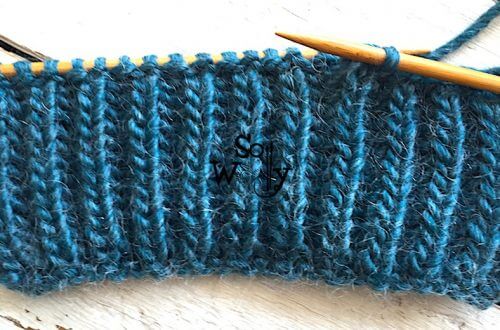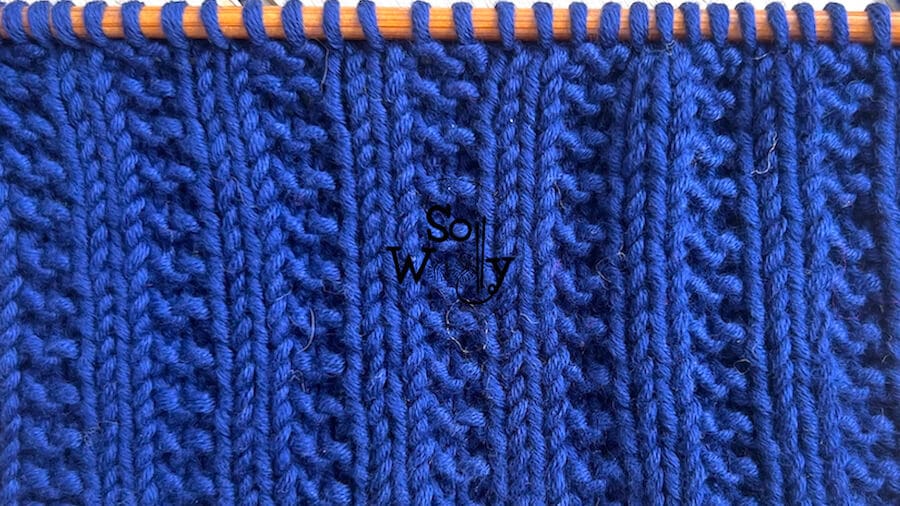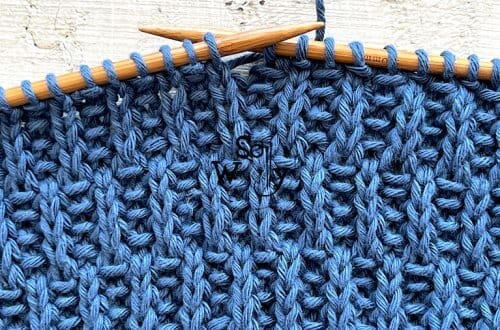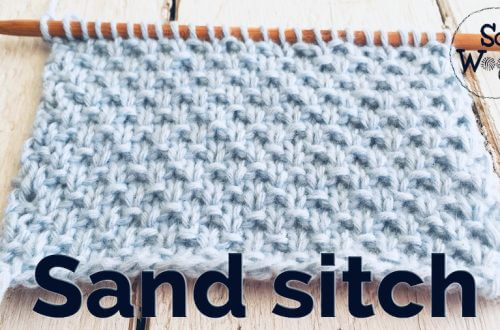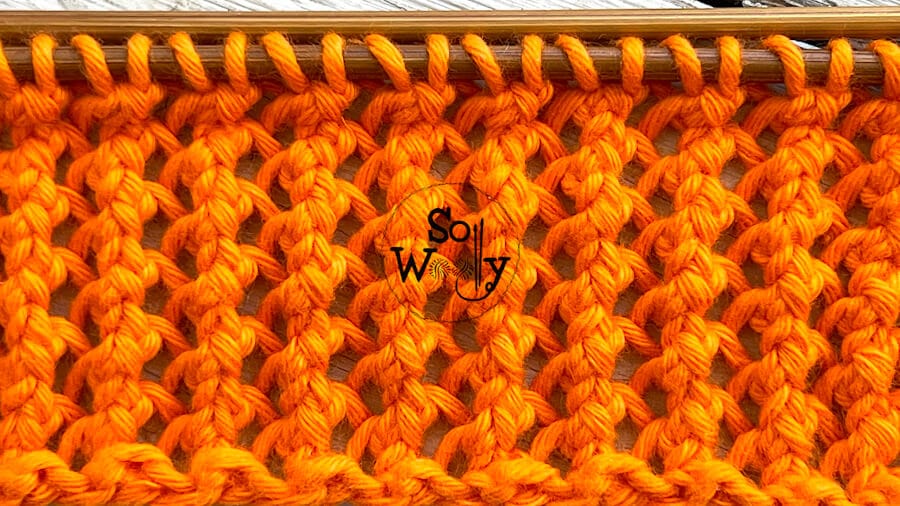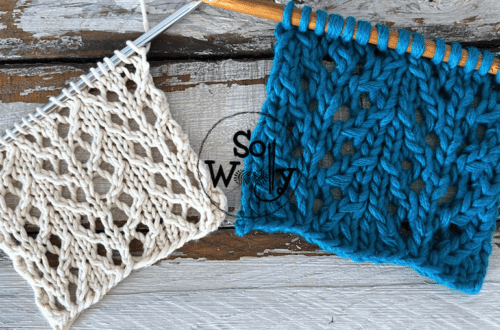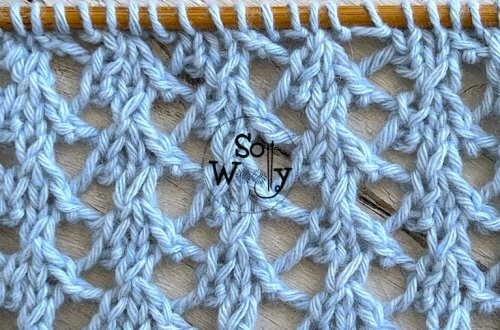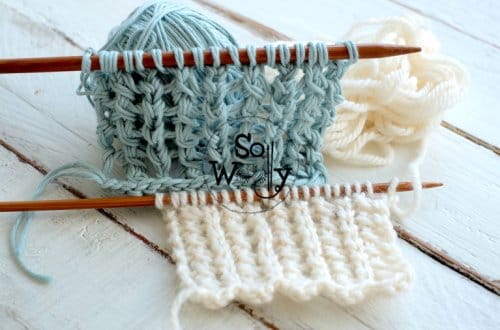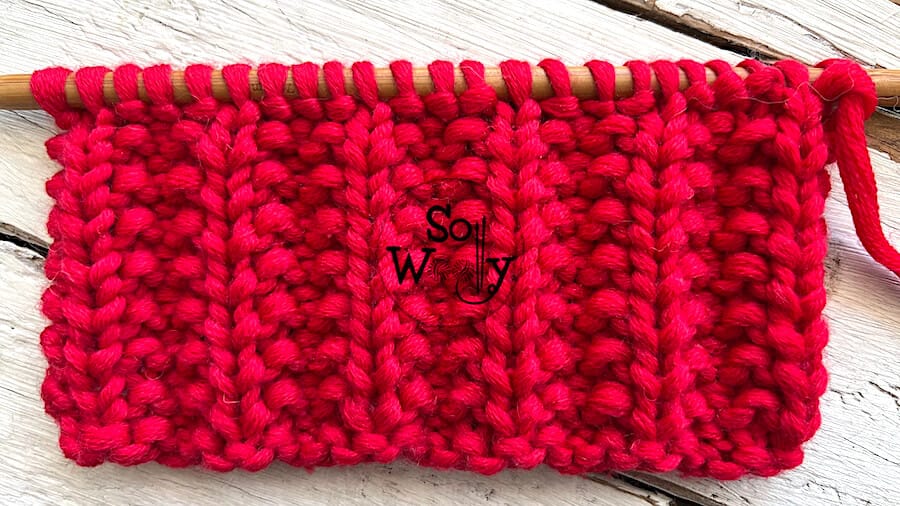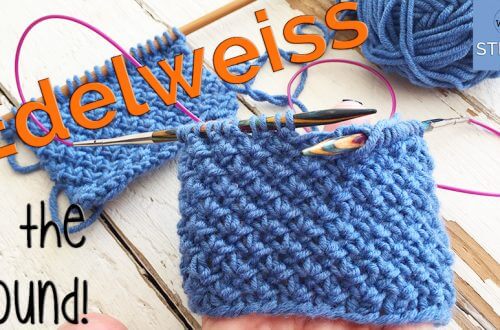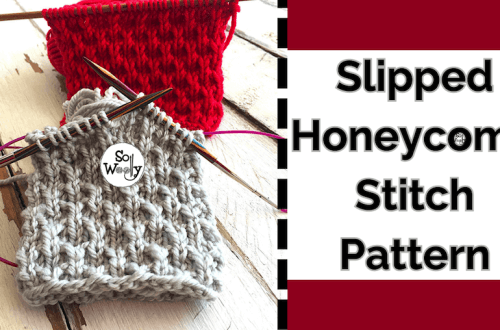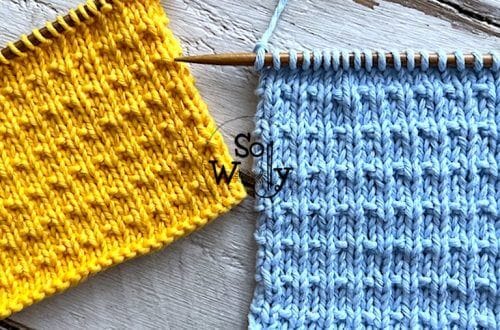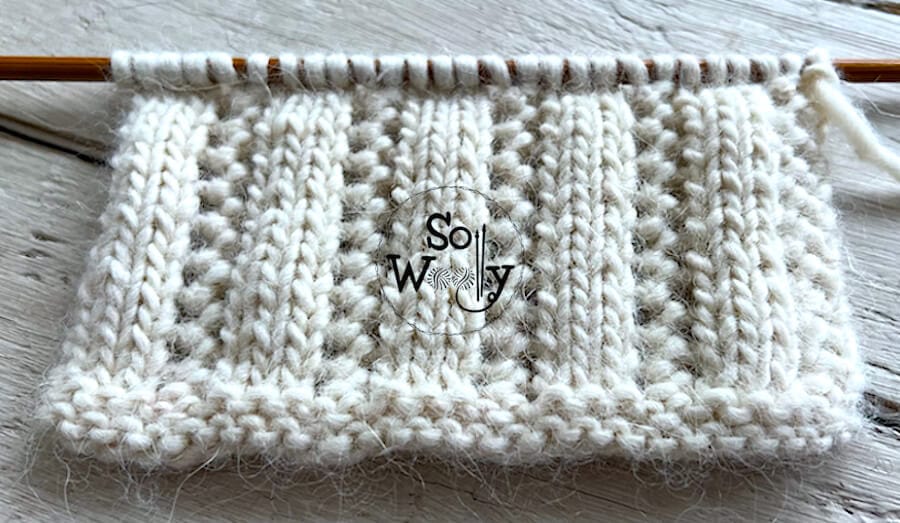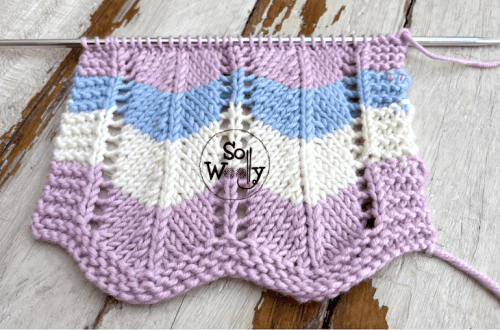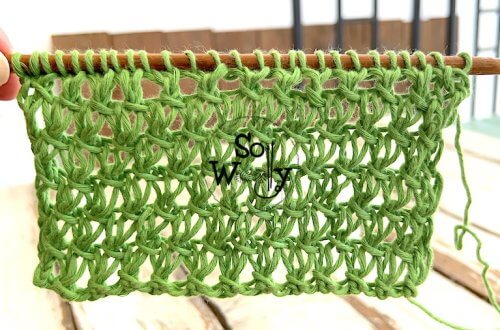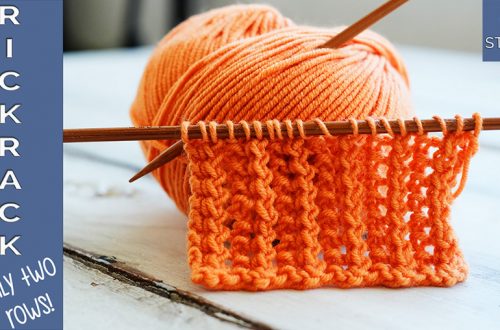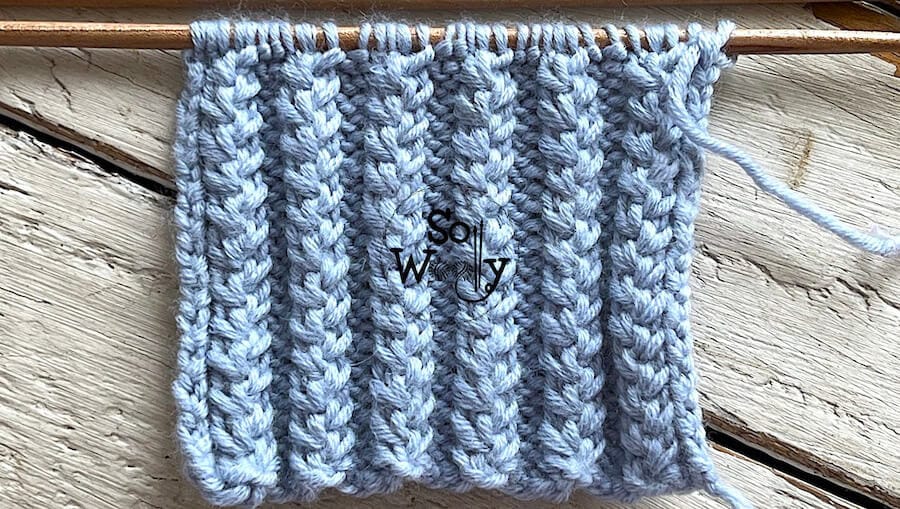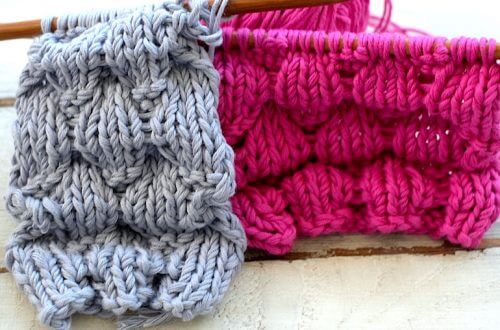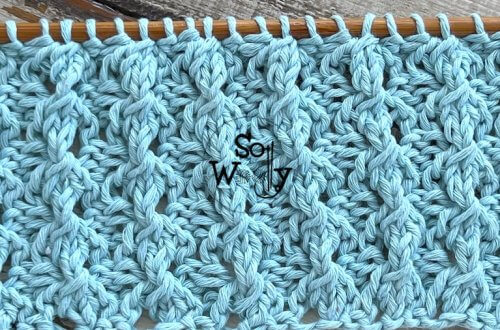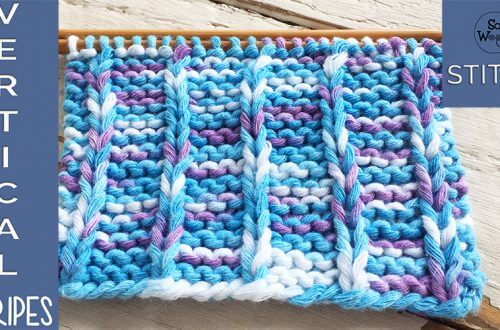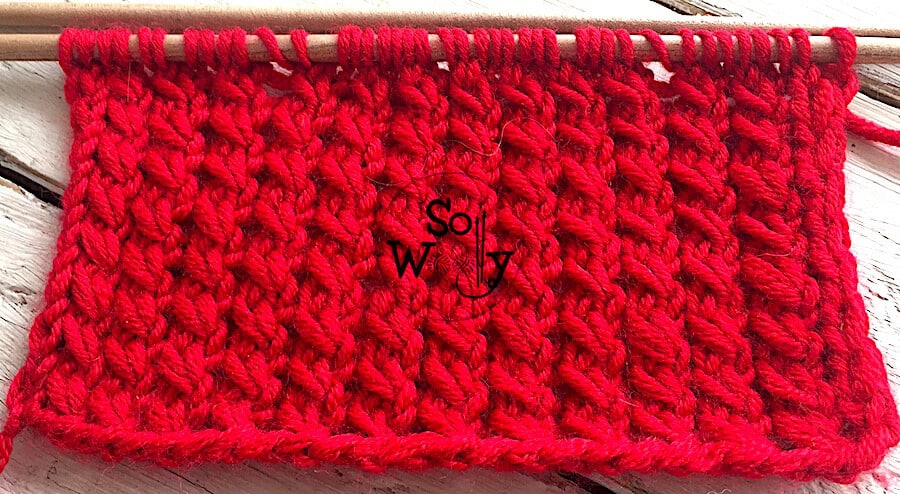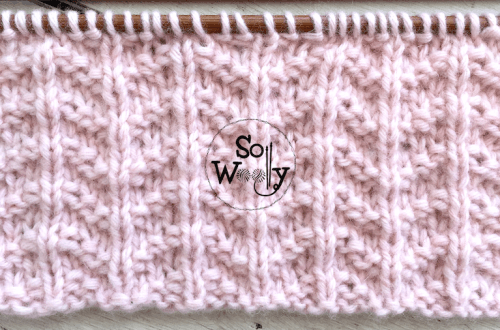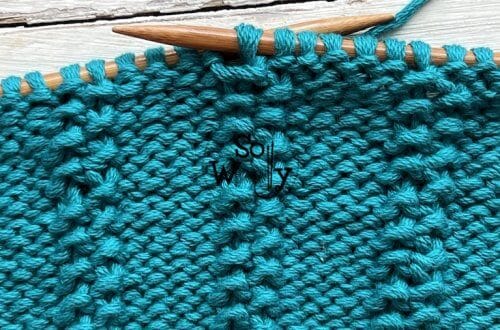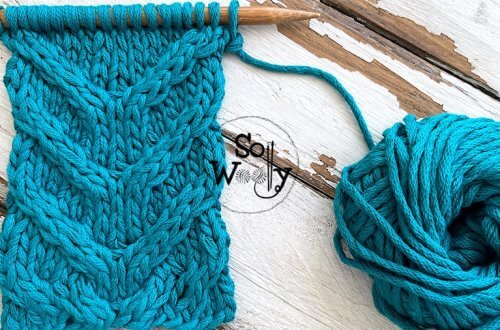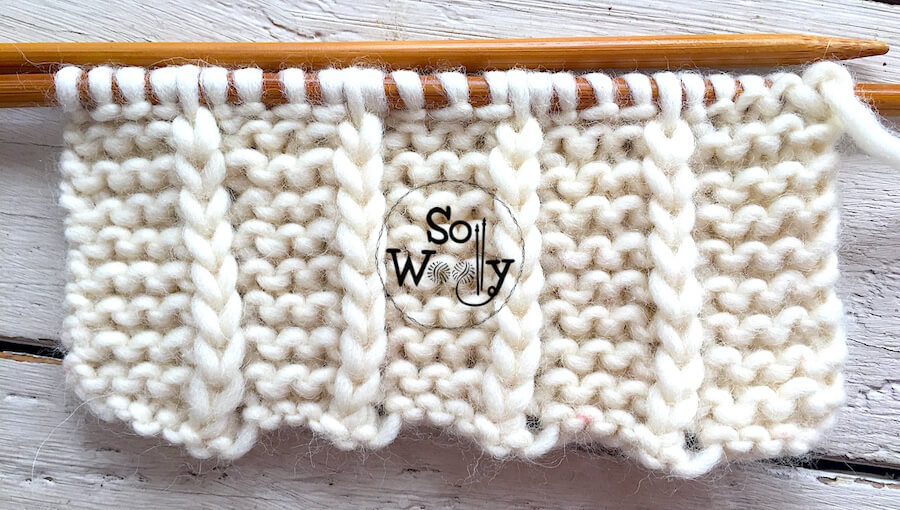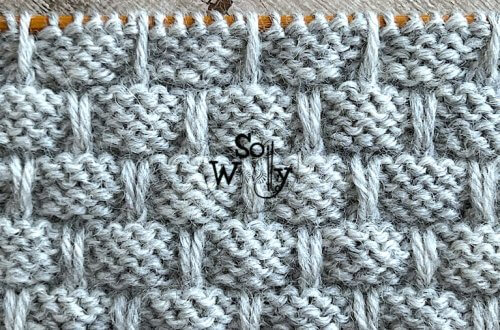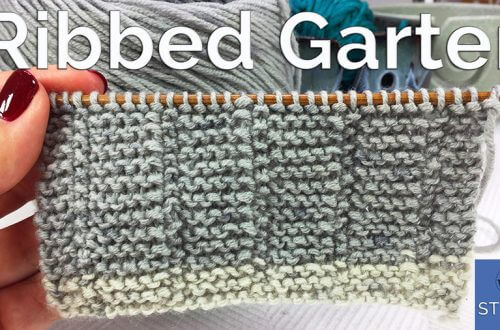-
How to knit a textured stitch pattern in just two rows
Today, you’ll learn how to knit a textured stitch pattern, in just two rows! Actually, if you can knit and purl, this one is for you; it’s so easy that one of those two rows is a plain purl row 😉 Although this textured stitch is not identical on both sides, to me, it’s a reversible pattern… Why? Well, both sides of the work look amazing, so you can decide which side you want to be the right side of your project. It reminds me of the Jute stitch that we practiced a while ago, but the other side of the work has a richer texture to it, it’s gorgeous…
-
How to knit the Shadow Rib stitch (two rows only!)
In this tutorial, I’m showing how to knit the Shadow Rib stitch pattern. It’s a pretty stitch, super easy to knit, and quick to memorize. Before starting, I’d like to clarify that it has nothing to do with the Shadow knitting technique we practiced a while ago. The Shadow stitch is a two-row repeat pattern; a lovely combination of knits and purls, ideal for beginners. Additionally, one of its advantages is that it does not curl. In fact, the frequency of knit and purl stitches on every odd row produces a flat fabric; another great option for scarves, blankets, cowls, and blankets. Although both sides look different, the so-called wrong…
-
How to knit the Fancy Moss stitch Rib (only two rows!)
In this post, I’m sharing how to knit the Fancy Moss stitch Rib, a lovely variation of the classic Ribbing (like the Half Garter Rib we practiced a while ago). Honestly, I love to have options, because variety is the spice of life 😉 Time and time again I find myself doing the same 2 x 2 Rib automatically, without thinking… and the truth is that there are tons of alternatives. This is why I keep teaching you different patterns, this way I have them in mind when it comes to designing a new project. Oh! I almost forgot! This is another great example: The Lace Rib stitch. In fact,…
-
How to knit the Double Garter Rib stitch (only two rows)
In today’s tutorial, I’m sharing how to knit the Double Garter Rib stitch, step by step. Honestly, I think it’s a perfect stitch for borders or edges; especially when we don’t need them to be stretchy (as they would be when using the classic 2 x 2 Ribbing). For instance, use it on each side of a blanket, of a scarf, or on each side of an infinite cowl in case you used a stitch that curls or bends. In other words, it’s a substitute for the Seed stitch, Garter stitch, or the Irish Moss stitch. However, the Double Garter Rib is a pretty versatile pattern. It will also work…
-
How to knit the Mock Turkish stitch: A pretty two-row pattern
The Mock Turkish stitch is one of those lace patterns that knitters love… Why? Well, there are several important reasons: Undoubtedly, lace knitting is infamous for its complexity, a technique that consists of creating a hollowed fabric, through increases and decreases. Not just because of the long repetitions, nor the number of rows needed to form a pattern, but also due to the fact that mistakes take time and a lot of fiddling to fix. On the contrary, the Mock Turkish stitch is a two-row repeat pattern, that I’m sure you’ll memorize quickly because it involves only two steps to be repeated on each row. According to some knitters (and…
-
How to knit a second version of the famous Mock English Rib stitch
In this post, you’ll learn a second version of the Mock English Rib stitch; I shared the first one some months ago, and it’s also adorable! Although both stitches look similar, the main differences are: This one looks flatter; the columns of “v’s” aren’t raised as in the first version. And this second version isn’t as stretchy as the anterior. So I wouldn’t use it for the cuffs of hats, sweaters, or socks. In fact, I think it’s a great pattern for blankies. However, they share most of the details: 1) They’re two-row repeat patterns 2) Both are reversible and identical on both sides 3) They lay flat 4) There’s…
-
How to knit an easy Lace Column Scarf stitch pattern in two rows!
In today’s tutorial, you’ll learn how to knit an easy Lace Column Scarf stitch: It’s simply gorgeous! My swatch hasn’t been blocked yet and it looks adorable, so imagine it after a nice blocking process 🙂 It’s a two-row repeat knitting pattern, which includes a couple of steps that you’ll remember trouble-free. Although it’s not reversible, the lace columns look pretty also on the wrong side of the work… I’m loving it. And the techniques required are quite simple: knit and purl stitches, plus some yarn overs here and there. Finally, in the video tutorial, I’m sharing how to do it in both, English and Continental methods. So, no excuses!…
-
How to knit the Double Braided Rib stitch
In today’s post, you’ll learn how to knit the adorable Double Braided Rib stitch, step by step. It’s a reversible two-row repeat pattern; although not identical on both sides. Additionally, it doesn’t roll up, so it’s a nice option when knitting scarves or infinite cowls, or any other kind of rectangular garment. However, I’m sure it will give an elegant touch to the cuffs of sweaters, hats, and socks. Similar to the Mock Cable Ribbing stitch, we practiced a while ago, the Double Braided Rib features a double-cross that resembles a braid. So, grab your needles and a little bit of yarn, and let’s get busy 🙂 Abbreviations CO: Cast…
-
How to knit the Twisted Rib stitch (English and Continental style)
In this tutorial, you’ll learn how to knit the Twisted Rib stitch, an interesting version of the 2 x 2 Rib. In my humble opinion, all these different versions of the classic rib stitches are so useful. They add a nice touch to your knitting work. However, this one is not quite as stretchy as some other rib styles. This is why I’d use it as a main stitch for a whole garment, such as a scarf or an infinite cowl, rather than cuffs in general. In fact, its design creates small cables, a vertical pattern that will stand out in a large piece. On the other hand, the Twisted Rib…
-
Easy two-row repeat knit stitch, for scarves and blankets
Today, I’m sharing a lovely two-row repeat knit stitch, great for scarves, blankies, and infinite cowls. Its design creates embossed columns, with crispy and gorgeous vertical lines. Not only is it easy to make and memorize, its also reversible (not identical on both sides, but the other side of the work looks gorgeous too). Additionally, this two-row repeat pattern stays flat all the time, so there’s no need to think about edges 😉 If you’re starting to knit, my suggestion is to get sharp tip needles. This will make everything easier; the sharp tip helps to get two stitches together, and to purl a stitch through the back loop! Believe…
